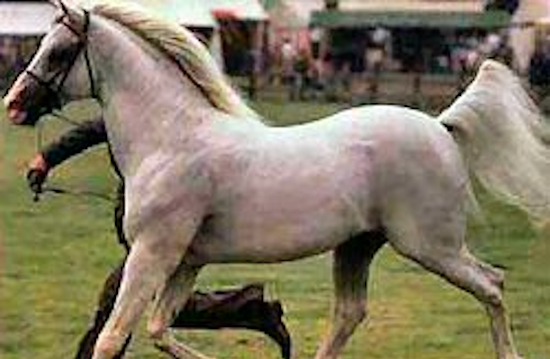Arabian Horse
Place of origin
Saudi Arabia
Aptitudes
Saddle and rapid light shooting.
Height
Fluctuates between 145 cm and 155 cm; in some cases falls below the minimum limit.
Population
Horse of international interest, spread all over the world.
Coat
Grey, bay, sorrel, morello and roan, the latter being rarer.
Characteristics
Nebbishy, sober and undemanding.
Breed standard
It has a small head with a straight or slightly cambered profile, a wide forehead, small pointed ears, large expressive eyes, wide nostrils and thin lips. The neck is long and well arched, wide at the base and well attached, adorned with a long, thick mane; the withers are well detached and dry, the back-lumbar line is straight, the back is short (17 dorsal vertebrae instead of 18), the kidneys are short (5 lumbar vertebrae instead of 6) and wide, the croup is also wide and horizontal, the tail is high, rich and elegantly carried, the chest is well muscled, the chest wide and deep, the abdomen rather retracted, the shoulder is long and sloping. The limbs are well muscled and provided with wide joints, the tendons are dry and well detached, the foot small with a very strong hoof. The loins are perfect; the skin appears thin and elastic and is covered with short, shiny hairs.
Historical data
The Arabian Thoroughbred is one of the oldest breeds: its origin dates back to 3000 B.C., as testified by archaeological finds that have come to light in the Arabian deserts. An aura of mystery and mysticism surrounds this animal around which a web of legends has been woven. One of these has it descended from seven progenitors, chosen by King Solomon from among the forty thousand chariot horses and twelve thousand saddle horses he owned, from which as many breeds would be derived. Popular tradition has it instead descended from five mares that arrived in Mecca before the others among the eighty-five sent by Muhammad to bring the announcement of victory. The Arabian is the ultimate expression of beauty that is concretised through the harmony and elegance of its forms. This horse has in the past been used to create or improve other breeds in every corner of the earth, first and foremost the English Thoroughbred
